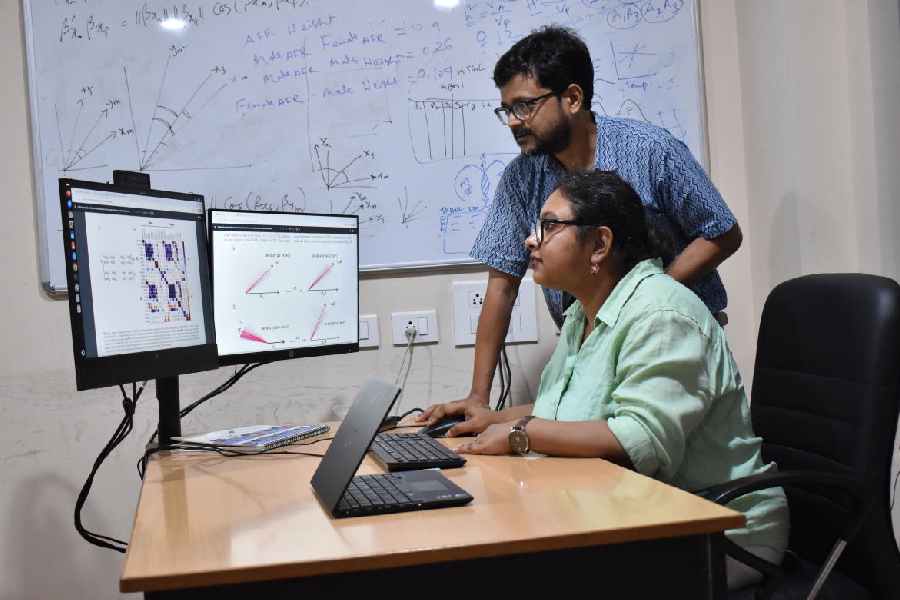Scientists in India have detected the phenomenon known as “sexual antagonism” in the genes that control testosterone levels, providing fresh insights into the differences in the genetic architecture of men and women.
The researchers at the National Institute of Biomedical Genomics (NIBMG), Kalyani, have found that testosterone — a hormone popularly linked to aggression and machismo — plays a much broader and previously unknown role in shaping those female-male differences.
Their findings provide a genetic basis for long-standing physiological observations that testosterone influences differences in body mass index — a measure of weight with height — and waist circumference in men and women in opposite ways.
“The genes that influence female-male differences are scattered across the genome. We’ve found that a large proportion of those genes have opposite effects in different traits in females and males — this is what is called sexual antagonism,” said Anasuya Chakrabarty, a faculty fellow at the NIBMG.
The study has found, for instance, that genes that increase testosterone in women also increase the body mass index and waist circumference in men and women. But the genes that increase testosterone in men decrease the body mass index and waist circumference in women and men.
Multiple earlier observations have shown that obese men have low testosterone levels.
“This study also shows that such a relationship may be rooted in the ‘opposite’ action of the same gene variants — those that increase testosterone in men also reduce body mass index in men and women,” said Analabha Basu, professor of population genetics at the NIBMG, who led the study.
The findings were published in the US research journal Proceedings of the National Academy of Sciences on Monday.
Chakrabarty, Basu and team members Diptarup Nandi and Saikat Chakraborty used data from the UK’s BioBank, a giant database that contains biomedical information from more than 500,000 volunteers and that can be accessed by approved researchers anywhere in the world.
The NIBMG researchers looked for genetic correlations, if any, among 12 traits relating to body size and fat measurements and testosterone levels in the 500,000 men and women.
They found sexual antagonism — genes responsible for one direction of traits in one sex had an opposite effect for another trait in the other sex — in 18 (nearly 27 per cent) of the 66 genetic correlations studied between men and women across different traits.
The genes that contribute to increased leg fat in women, for instance, decrease height and waist circumference in men. Or the genes that contribute to increasing arm fat in women decrease trunk fat in men.
Their study marks a major advance in understanding the biology of female and male architecture in humans by revealing differences across multiple traits which, the scientists say, would not have been possible by studying single traits.











